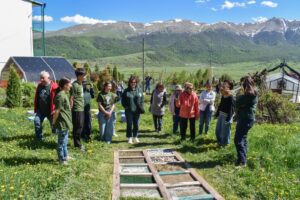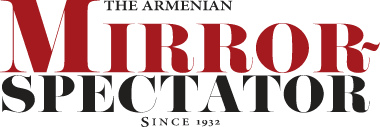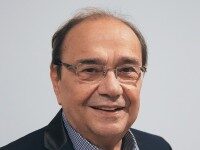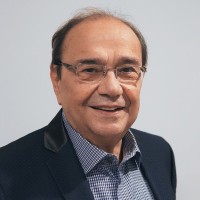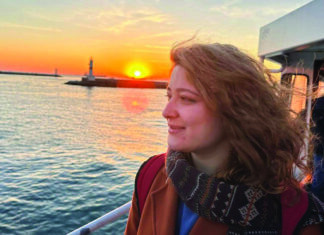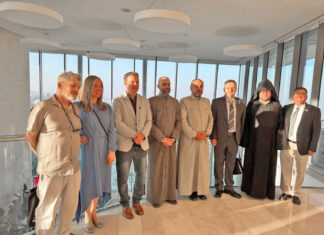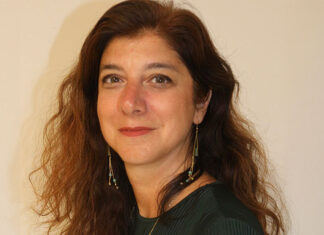CAMBRIDGE, Mass. — The Society for Armenian Studies (SAS) marked its 50th Anniversary with a three-day groundbreaking international conference at Harvard University and the National Association for Armenian Studies and Research (NAASR). Titled “Armenian Studies: Evolving Connections and Conversations,” the conference took place on September 13-15 and was co-sponsored by the Mashtots Chair in Armenian Studies (Harvard University); the National Association for Armenian Studies and Research (Belmont, MA); the Promise Armenian Institute (University of California, Los Angeles); the Richard Hovannisian Endowed Chair in Modern Armenian History (University of California, Los Angeles); the Narekatsi Chair in Armenian Studies (University of California, Los Angeles); the Armenian Studies Program (California State University, Fresno); the Institute for Armenian Studies (University of Southern California); the Robert Aram and Marianne Kaloosdian and Stephen and Marian Mugar Chair of Armenian Genocide Studies (Clark University); the Center for Armenian Studies (University of California, Irvine); the Center for Armenian Studies (University of Michigan, Ann Arbor); the Institute of Armenian Studies (University of Southern California); the National Association for Armenian Studies and Research (Belmont, MA); the Armenian Studies Program (University of California, Berkeley); and the Armenian Research Center (University of Michigan, Dearborn).
Over fifty scholars from Armenia, Turkey, Switzerland, Austria, Germany, England, Australia, and the United States participated in the three-day conference. The conference dealt with established and emerging areas of focus within Armenian Studies, making connections and conversations with related areas of research. They included—but were not limited to—the study of diaspora, migration, and forced displacement; collective violence, trauma, memory, and genocide; race and ethnicity; women, gender, and sexuality; environment; transnational and global mobility of people and ideas; art, architecture, and material culture; print and other established and emerging foci.
The first day of the conference opened on Friday afternoon, September 13, at the Sackler Lecture Hall at Harvard University, to a capacity crowd audience. The organizing committee chair, Bedross Der Matossian (University of Nebraska, Lincoln), delivered the welcoming remarks. He noted that the conference marked a significant milestone both in Armenian Studies as a field and the Society of Armenian Studies as an institution. Der Matossian thanked the Organizing Committee, the Academic Committee, and the co-sponsors and highlighted the collective efforts that brought the “momentous international conference” to fruition, adding, “This is a huge milestone in the history of SAS. The breadth, the scope, and the multidisciplinary approaches of the papers delivered at the conference demonstrate how SAS has evolved from a handful of scholars to become the most important academic society in the Western Hemisphere, with cutting-edge approaches to Armenian Studies.”
Christina Maranci, Mashtots Chair in Armenian Studies (Harvard University) and the President of the Society for Armenian Studies (SAS), delivered the opening remarks by providing a brief overview of the history of the Society and its achievements. “This conference offers an opportunity to reflect on the achievements of the Society since its founding fifty years ago,” said Maranci. “Since its founding by eminent scholars Richard Hovannisian, Nina Garsoïan, Dickran Kouymjian, Robert Thomson, and Avedis Sanjian, the Society has grown and developed apace in both its membership (now close to 500), and in its profile. When one considers the multitude of webinars and podcasts, sponsored conference panels, lectures, the SAS website and social media, as well as awards for books and dissertations, grants, and the Journal for the Society of Armenian Studies, it is clear that SAS has achieved great things in its 50 years.”
The first day of the conference paid tribute to the contributions of eminent scholars who left an indelible mark on the field. These scholars, including Robert Thomson, Avedis Sanjian, Robert Hewsen, Nina Garsoïan, Sirarpie Der Nersessian, Lucy Der Manuelian, George Bournoutian, Anahide Ter Minassian, Louise Nalbandian, Richard G. Hovannisian, Dennis Papazian, and Vahakn N. Dadrian, significantly shaped the development of Armenian Studies and paved the way for succeeding generations.
After the tribute panels, a reception was held in honor of the participants at the Harvard Museum of the Ancient Near East and featured Armenian folklore music by the prominent “Musaner” group. On the same evening, SAS President Maranci gave “The SAS Lifetime Achievement Award” to Stephan Astourian, Anny Bakalian, Levon Chorbajian, Roberta Ervine, Jirair Libaridian, Krikor Maksoudian, Levon Marashlian, Rubina Peroomian, and Abraham Terian, in recognition of and appreciation for their outstanding service and contribution to the field of Armenian Studies.
